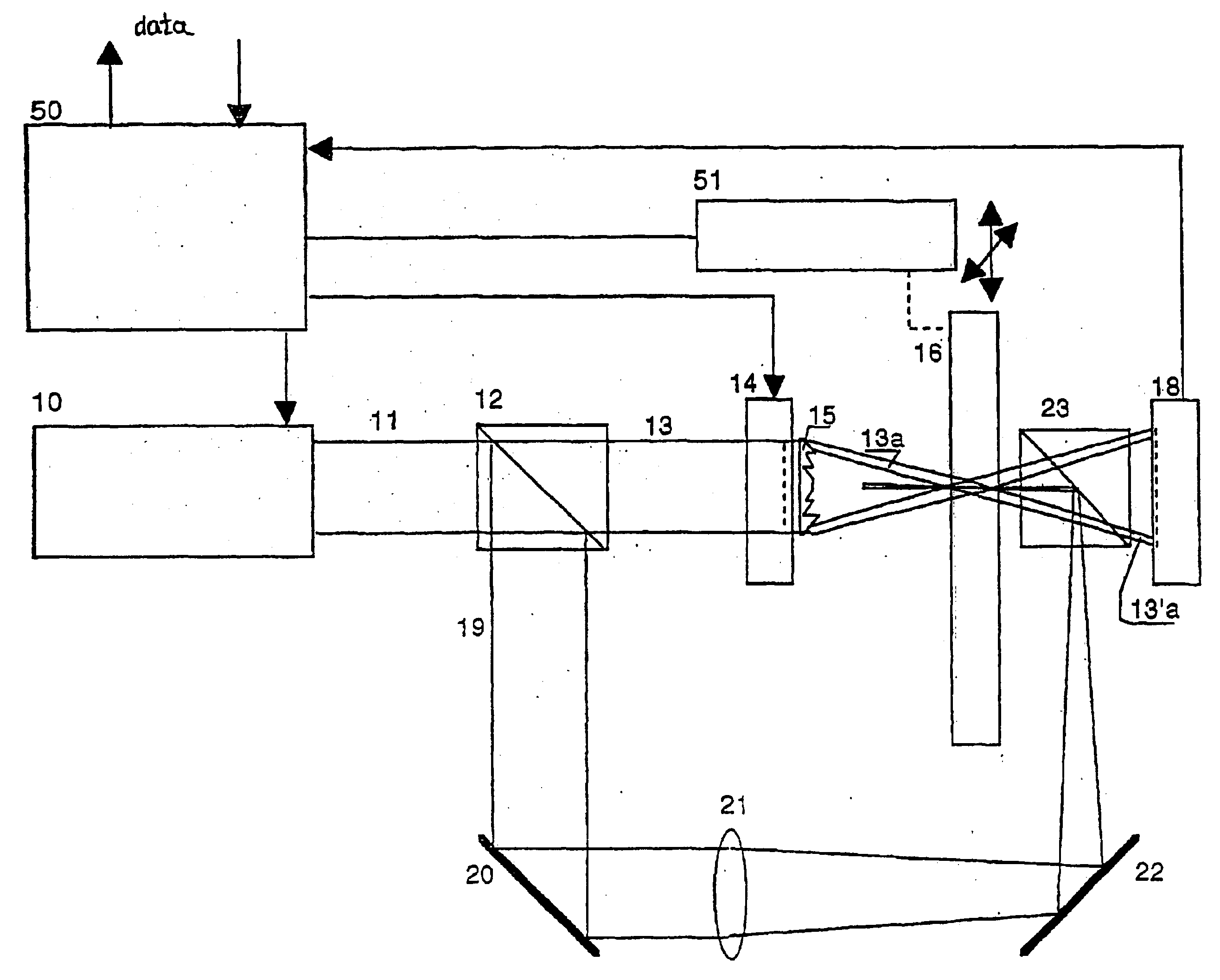Confocal holographic optical storage with non-overlapping records
a confocal holographic optical storage and record technology, applied in the field of three-dimensional technique of hologram recording, can solve the problems of difficult selective erasure of single holograms, diffraction efficiency of individual holograms to rapidly decline, and relatively complex methods of multiplexing
- Summary
- Abstract
- Description
- Claims
- Application Information
AI Technical Summary
Benefits of technology
Problems solved by technology
Method used
Image
Examples
embodiment 1
FIG. 1 is a schematic diagram of the system for holographic optical data storage and retrieval in a plate-shaped material 16. To write and read holograms, a laser 10 of a suitable wavelength and with a quality output beam 11 is required. The beam is split into a signal beam 13 and a reference beam 19 by a splitter 12. The signal beam travels through a modulator 14, which, being equipped with pixels with individually controllable permeability, amplitude-modulates the cross-section of the beam 13, thereby loading it with data. The lens 15, which may be a common lens, a Fresnel lens, or an array of microlenses, in close contact with the modulator 14, focuses the signal beam 13 into a beam, whose smallest cross-section lies in the median of the plate 16. In FIG. 1, a portion of the signal beam 13 is designated with the numeral 13a. The reference beam 19 is reflected from the mirror 20 and focused by the lens 21 of a suitable focal length. After being reflected from the mirror 22 and the...
second embodiment
FIG. 2 is a schematic diagram of the system for holographic optical data storage and retrieval, which is a variation of the system in FIG. 1, differing therefrom in that the reference beam 19 impinges upon the storage plate 16 from the same direction as the signal beam 13. As in the previous case, it is required that the waist of the reference beam 19 lie in the median of the plate 16, which is achieved by appropriately selecting the distance from the lens 21 to the mirror 24 and further to the plate 16. In this case, the reference beam 19 impinges upon the plate 16 at an angle of 20 to 45 degrees, which does not alter the conditions of hologram writing and reading in a substantial degree.
The embodiment in FIG. 2 shows another possible modification of the second embodiment with respect to the first embodiment. The light modulator 14 is followed by the lens 15', which focuses the signal beam 13 into a beam, whose smallest diameter lies in the median of the plate 16. In this case, the...
PUM
| Property | Measurement | Unit |
|---|---|---|
| refractive index | aaaaa | aaaaa |
| thickness | aaaaa | aaaaa |
| thickness | aaaaa | aaaaa |
Abstract
Description
Claims
Application Information
 Login to View More
Login to View More - R&D
- Intellectual Property
- Life Sciences
- Materials
- Tech Scout
- Unparalleled Data Quality
- Higher Quality Content
- 60% Fewer Hallucinations
Browse by: Latest US Patents, China's latest patents, Technical Efficacy Thesaurus, Application Domain, Technology Topic, Popular Technical Reports.
© 2025 PatSnap. All rights reserved.Legal|Privacy policy|Modern Slavery Act Transparency Statement|Sitemap|About US| Contact US: help@patsnap.com



